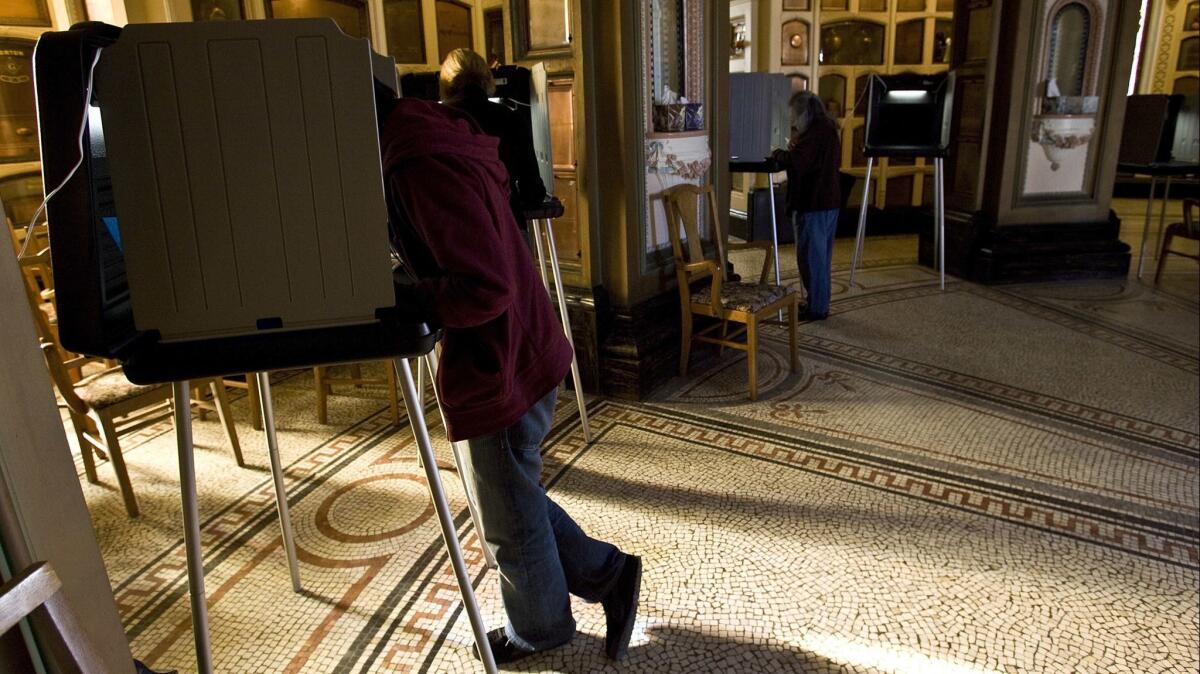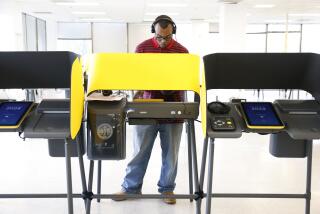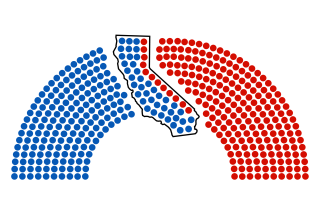How California’s early primary illustrates the state’s political inferiority complex

California loves to talk about itself in superlatives: The nation’s most populous state. The fifth-largest economy in the world. Producer of tech titans and Hollywood blockbusters and a whole lot of fruits and veggies.
But even as it basks in its outsize economic and cultural influence, something has been gnawing at the state’s psyche. When it comes to presidential politics, we’re more backbencher than behemoth.
The moving of California’s 2020 presidential primary to March 3 — nipping at the heels of the four traditional early nominating states of Iowa, New Hampshire, Nevada and South Carolina — is the latest bid to play with the calendar in hopes of gaining more electoral relevance. This will be the fifth time since 1992 the state has moved its presidential primary. It’s bounced around: June, March, February and back again.
The perpetual tinkering underscores how California just can’t seem to shake its political inferiority complex.
“We have this impression that California is leading the nation,” said Fabian Nuñez, former Assembly speaker. “On the other hand, it’s like — who? Where?”
The portrayal of California as insignificant will certainly elicit laughter and eye-rolls beyond our borders. But across the Golden State, politicians, academics and voters tend to react to our second-rate status in visceral terms.
“When I see those voters in Iowa and New Hampshire getting that access [to candidates], it makes me mad,” said Kim Alexander, president of California Voter Foundation, which champions election reforms. “They’re not California voters and they don’t necessarily believe in the same priorities that California voters do.”
Kim Nalder, a political scientist at Cal State Sacramento, called California’s lack of impact on presidential elections “patently absurd.”
“It makes a lot of sense that we have a sense of resentment over that fact,” Nalder said. “It also makes sense our elected officials keep trying to find a way to make us relevant.”
2020 Democratic Presidential Candidates: Who’s in and who’s on the fence? »
California’s recent history is lousy with lawmakers trying to time the state’s primary for maximum import. It rarely worked.
For much of the modern primary system, the state held a traditional June nominating contest. Occasionally, it proved decisive. In 1964, Barry Goldwater, the conservative firebrand senator from Arizona, effectively clinched the GOP nomination when he won the party’s primary in California.
Eight years later, California Democrats sided with South Dakota Sen. George McGovern, handing him enough delegates to secure the nomination.
But most cycles, California’s primary was inconsequential, prompting frustrated politicians to move the 1996 presidential primary to late March. Problem was, many other states followed California’s lead, leapfrogging to even earlier dates in the calendar. By the time the election rolled out, 31 states had already voted and Kansas Sen. Bob Dole, who was running to challenge President Clinton, had sewn up the GOP nomination.
In 2008, the state shared its Feb. 5 primary with 22 other states and territories. California, the “Super Tuesday” crown jewel, showed mixed results in picking the eventual nominees. Republicans in the state favored Arizona Sen. John McCain, who later secured the nomination. Democrats sided with Hillary Clinton over Illinois Sen. Barack Obama, who ultimately emerged the winner.
While the state’s primaries may not have been determinative that year, they did prove successful in getting Californians to the polls. About 9 million people voted, marking the highest voter turnout rate in a primary in nearly three decades.
In an effort to cut costs, the primaries were moved back to June for the next two election cycles, consolidating the presidential and statewide primary contests.
When Ricardo Lara, then a Democratic state senator from Long Beach, wanted the rush of a competitive primary in 2016, he spent his time volunteering in neighboring Nevada. He found himself longing for similar action back home.
“I was like, why aren’t we in California?” he said. “Why is California continuing to be left out of this conversation until June?”
Reeling from Donald Trump’s win in 2016, Lara introduced a bill to try yet again for a March primary. Gov. Jerry Brown signed the measure in 2017.
“I was quite honestly tired of sitting on the sidelines and seeing candidates whisk across the country and simply coming to California to raise money and leaving,” said Lara, now the state’s insurance commissioner.
California’s 2020 contest finds itself on somewhat even footing with Iowa with its storied first-in-the-nation caucuses. Because of California’s robust vote-by-mail program, balloting begins on Feb. 3, the same day Iowans caucus.
Old, young, liberal, centrist: Democrats will have no end of choices for president in 2020 »
The Des Moines Register fretted that California’s early primary “could pose an existential threat to Iowa’s caucuses.” But Nalder said Iowans needn’t worry too much about losing presidential aspirants’ attentions.
“The sort of campaign you have to run in California is different than the race you’d run in Iowa and New Hampshire,” Nalder said. “California is far too big to campaign with book clubs and Rotary meetings.”
Proponents of the earlier California primary say the state doesn’t necessarily have to back the eventual winner to show it has political prestige. They point to other metrics — money spent on advertising, local campaign events, elevating issues dear to Californians such as climate change or homelessness — to gauge success.
So far, the presidential contenders have largely stuck with the standard playbook of frequent visits to Iowa coffeehouses, New Hampshire living rooms and South Carolina barbecue joints. But there have been exceptions: California Sen. Kamala Harris showed some West Coast love in launching her campaign with a massive Oakland rally, and Sen. Elizabeth Warren of Massachusetts included a Glendale town hall in a recent multistate swing.
Standing in line for the Warren event, Char Manley, a healthcare worker from Huntington Beach, nurtured a hope that maybe Warren’s visit was a sign that this time, maybe, voters like her wouldn’t be taken for granted.
“People think, ‘Well, California is going to go blue — it’s kind of a given,’ ” she said. “We do have a diverse state. There are conservative parts of the state.”
Fellow attendee Ryan Perez, a speech therapist from Sylmar, commiserated with her, arguing that California’s economic might should afford it more political stature.
“We are the most populous state,” he said, returning to Californians’ penchant for superlatives. “We do need to have more influence.”
CALIFORNIA COUNTDOWN
In Kamala Harris, a sequel to Ronald Reagan?
Democrats, facing a big candidate field, ask: Who can beat Trump?
California’s presidential primary: Here’s what you need to know
More to Read
Get the L.A. Times Politics newsletter
Deeply reported insights into legislation, politics and policy from Sacramento, Washington and beyond. In your inbox three times per week.
You may occasionally receive promotional content from the Los Angeles Times.







